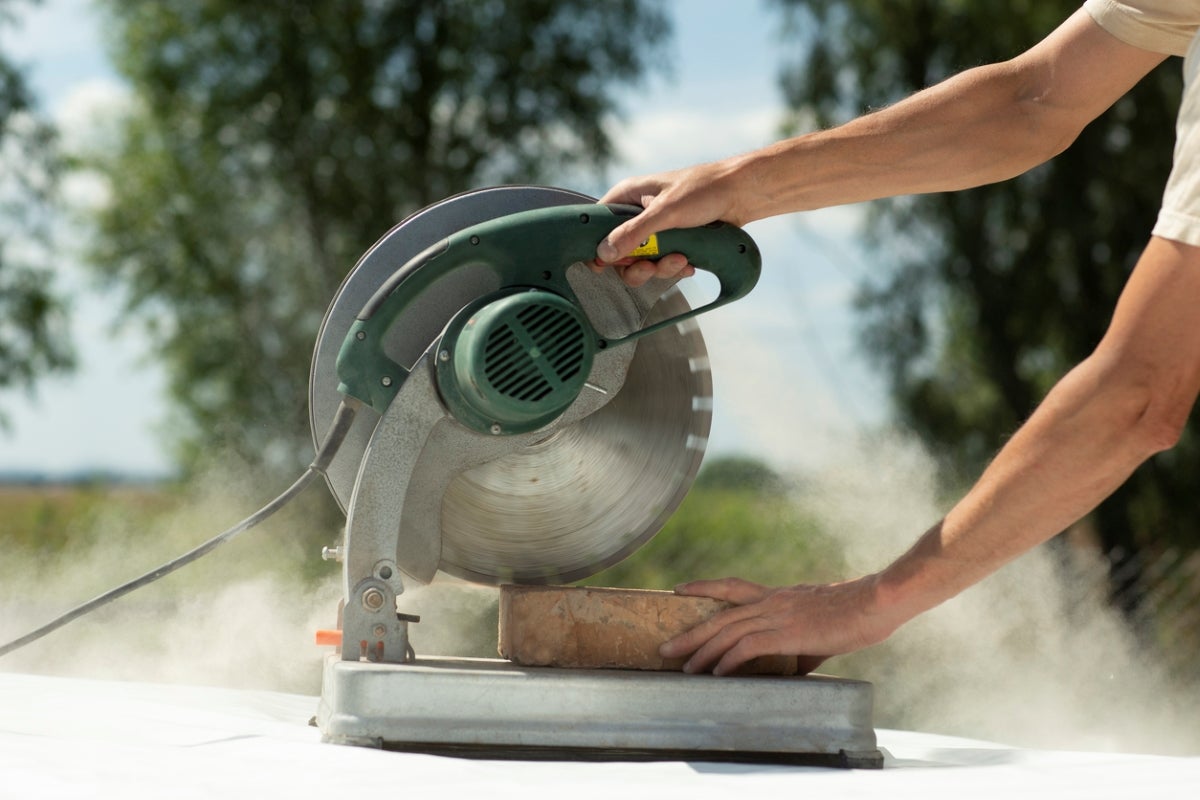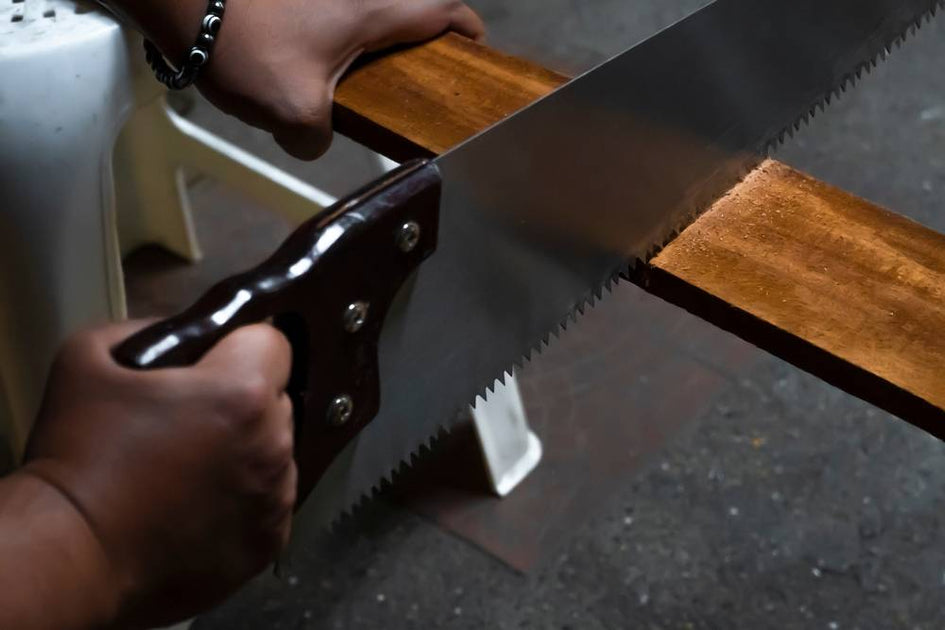Are hand saws dangerous? Well, let’s talk saws for a moment. You know, those trusty tools we use to cut through wood like a hot knife through butter. Ah, the power! But with great power comes great responsibility, as they say. Hand saws can be quite useful, but they can also be dangerous if not used correctly. So, if you’re curious about the risks and safety precautions when it comes to hand saws, you’ve come to the right place!
Now, before we dive into the nitty-gritty, let me tell you a little secret. Hand saws have been around for centuries, helping us shape the world around us. They come in different shapes and sizes, from the classic crosscut saw to the versatile coping saw. But here’s the thing: with all that impressive cutting ability, hand saws can pose risks if mishandled. So, whether you’re a seasoned carpenter or just starting out, it’s crucial to understand the potential dangers and how to stay safe while sawing.
Alright, I can almost hear you asking, “What makes hand saws dangerous?” It’s a fair question, my friend. Hand saws have sharp teeth that can slice through wood effortlessly, but that means they can also slice through human skin with equal ease if not handled carefully. Accidents happen when you least expect them, and one tiny slip could lead to an unpleasant encounter with the saw’s unforgiving teeth. But fear not! We’re here to equip you with knowledge on how to minimize the risk associated with hand saws and keep all ten fingers intact. So, let’s get started, shall we?

The Safety of Hand Saws: Dispelling Myths and Understanding Risks
Hand saws are a common tool found in many households and workshops, but are they dangerous? This article aims to provide an in-depth exploration of the safety aspects surrounding hand saws. From debunking myths to understanding risks and offering safety tips, we’ll cover everything you need to know to use hand saws confidently and responsibly.
Understanding Hand Saws: An Essential Guide for Safe Usage
Before delving into the safety aspects of hand saws, it’s crucial to have a thorough understanding of these tools. Hand saws are manual cutting devices comprising a sharp-toothed blade held in place by a handle. They come in various types, such as crosscut saws, rip saws, and backsaws, each designed for specific cutting tasks. Hand saws are often praised for their versatility, portability, and efficiency when it comes to woodworking and construction projects.
1) Debunking the Myth: Hand Saws as Dangerous Tools
There is a common misconception that hand saws are inherently dangerous tools. While it’s true that any tool has the potential to cause harm if not used properly, hand saws, when used with caution and following safety guidelines, are relatively safe. The perceived danger often arises from inaccurate portrayals in movies or exaggerated stories. In reality, hand saws have been used for centuries, and with the right precautions, they can be a reliable and safe tool for various tasks.
It’s important to note that accidents involving hand saws are typically a result of human error or negligence. By understanding the risks involved and practicing proper safety measures, the potential for accidents or injuries can be significantly minimized. Safety glasses, protective gloves, and secure work surfaces are just a few examples of safety precautions that can reduce the likelihood of accidents.
By dispelling the myths and understanding the real risks involved, we can approach using hand saws with confidence while prioritizing safety.
2) Identifying Potential Risks: Safety Precautions and Awareness
While hand saws are relatively safe when used correctly, it’s vital to be aware of the potential risks and take necessary precautions to minimize them. One common risk associated with hand saws is the potential for cuts and lacerations. The sharp teeth of the saw blade can easily penetrate the skin if mishandled or used carelessly. This highlights the importance of wearing protective gloves and using proper cutting techniques to maintain control and reduce the risk of injury.
Another potential risk when using hand saws is the possibility of the blade binding and causing kickback. Kickback occurs when the blade gets stuck or pinched, causing the saw to jerk back towards the user. This sudden movement can result in accidents. To prevent kickback, it’s crucial to maintain a firm grip, use appropriate cutting angles, and ensure the material being cut is well-supported. Additionally, choosing the right type of saw for the specific task at hand can further enhance safety.
It’s also important to consider the environment in which hand saws are used. Working in a well-lit area, maintaining a clutter-free workspace, and avoiding distractions can all contribute to safer usage. By being aware of potential risks and implementing necessary safety measures, the likelihood of accidents and injuries can be significantly reduced.
3) Safety Tips for Responsible Hand Saw Usage
While understanding the risks and potential hazards is crucial, incorporating safety tips into your hand saw usage routine is equally important. By following these guidelines, you can ensure safe and responsible usage of hand saws:
- Always wear appropriate personal protective equipment, including safety glasses and gloves, to protect yourself from potential injuries.
- Inspect the hand saw before each use to ensure the blade is sharp, stable, and securely attached to the handle.
- Choose the right type of saw for your specific cutting task. Different hand saws are designed for various materials and cutting techniques.
- Maintain a firm grip on the saw handle and use controlled, even strokes while cutting. Avoid rushing or applying excessive force.
- Secure the material you are cutting to prevent slipping or movement during the cutting process. This eliminates the potential for accidents caused by unexpected blade contact.
- Store hand saws in a safe and organized manner, away from the reach of children or unauthorized users.
- Regularly maintain and clean your hand saw to ensure optimal performance. This includes removing sawdust, debris, and applying lubricants when necessary.
By following these safety tips, you can confidently and responsibly use hand saws, minimizing the potential risks associated with their usage.
Conclusion
Hand saws, when used responsibly and with proper safety precautions, are valuable tools for a wide range of cutting tasks. By debunking the myth surrounding their perceived danger, understanding the potential risks, and implementing necessary safety measures, you can embrace the versatility and efficiency of hand saws while prioritizing the well-being of yourself and those around you.
Key Takeaways – Are Hand Saws Dangerous?
- Hand saws can be dangerous if not used properly.
- Always wear appropriate safety gear, including goggles and gloves.
- Keep the saw blade sharp to avoid accidents.
- Use the proper cutting technique to maintain control.
- Always follow the manufacturer’s instructions and guidelines.
Frequently Asked Questions
Hand saws can be powerful tools, but they also come with certain risks. Here are some commonly asked questions about the potential dangers associated with hand saws and their safe usage.
Question 1: How can hand saws be dangerous?
Hand saws can be dangerous because of their sharp blades, which can cause severe cuts and injuries if mishandled. Additionally, the force applied while sawing may lead to accidents or slipping, potentially causing harm to the user or those nearby.
However, when used properly and with the necessary safety precautions, hand saws can be safely operated, minimizing the risk of accidents or injuries.
Question 2: What safety equipment is recommended when using a hand saw?
When using a hand saw, it is important to wear safety goggles to protect your eyes from potential flying debris. Additionally, thick gloves can provide protection to your hands while handling the saw and prevent accidental cuts.
Furthermore, it is advisable to have a solid grip on the handle of the saw to maintain control and minimize the risk of slippage. Taking these safety measures can significantly reduce the chances of injuries while using a hand saw.
Question 3: Are there any specific techniques to ensure safe hand saw operation?
Yes, there are specific techniques that can help ensure safe hand saw operation. It is important to maintain a stable position while using the saw, with your feet planted firmly on the ground and your body properly balanced.
Additionally, using even pressure and controlled movements while sawing can prevent the blade from deviating or slipping, reducing the risk of accidents. By following proper technique and practices, you can safely operate a hand saw and minimize the potential dangers.
Question 4: Can hand saw accidents be prevented with proper maintenance?
Regular maintenance of hand saws is essential for both their optimal performance and to prevent accidents. Keeping the blades sharp and well-maintained ensures smooth cutting and reduces the need to apply excessive force, minimizing the risk of accidents.
Additionally, checking the condition of the handle and ensuring it is securely attached can prevent the saw from slipping or the handle breaking during use. Proper maintenance can go a long way in preventing accidents and ensuring the safe operation of hand saws.
Question 5: Are there any alternative tools to hand saws that are safer for beginners?
For beginners or those seeking alternatives to hand saws, there are electric or battery-powered saws available that may offer a safer option. These saws often have built-in safety features, such as blade guards or automatic shut-off mechanisms.
It is important to remember that even with these alternative tools, proper safety precautions should still be taken. While they may be considered safer, they still possess the potential for accidents if not used correctly or without the necessary safety measures in place.

Is Japan slowly killing western-style saws?
Summary
Hand saws can be dangerous if not used properly. Remember to always wear protective gear and use both hands when sawing. It’s important to choose the right saw for the job and keep the saw blades sharp. Additionally, be cautious of your surroundings and avoid distractions while using a hand saw.
Injury risks can be minimized by following safety guidelines and receiving proper training. Always hold the saw firmly and maintain a stable stance. If you’re unsure or uncomfortable with a task, seek help or guidance from an adult or professional. By taking these precautions, hand saws can be used safely and effectively.
